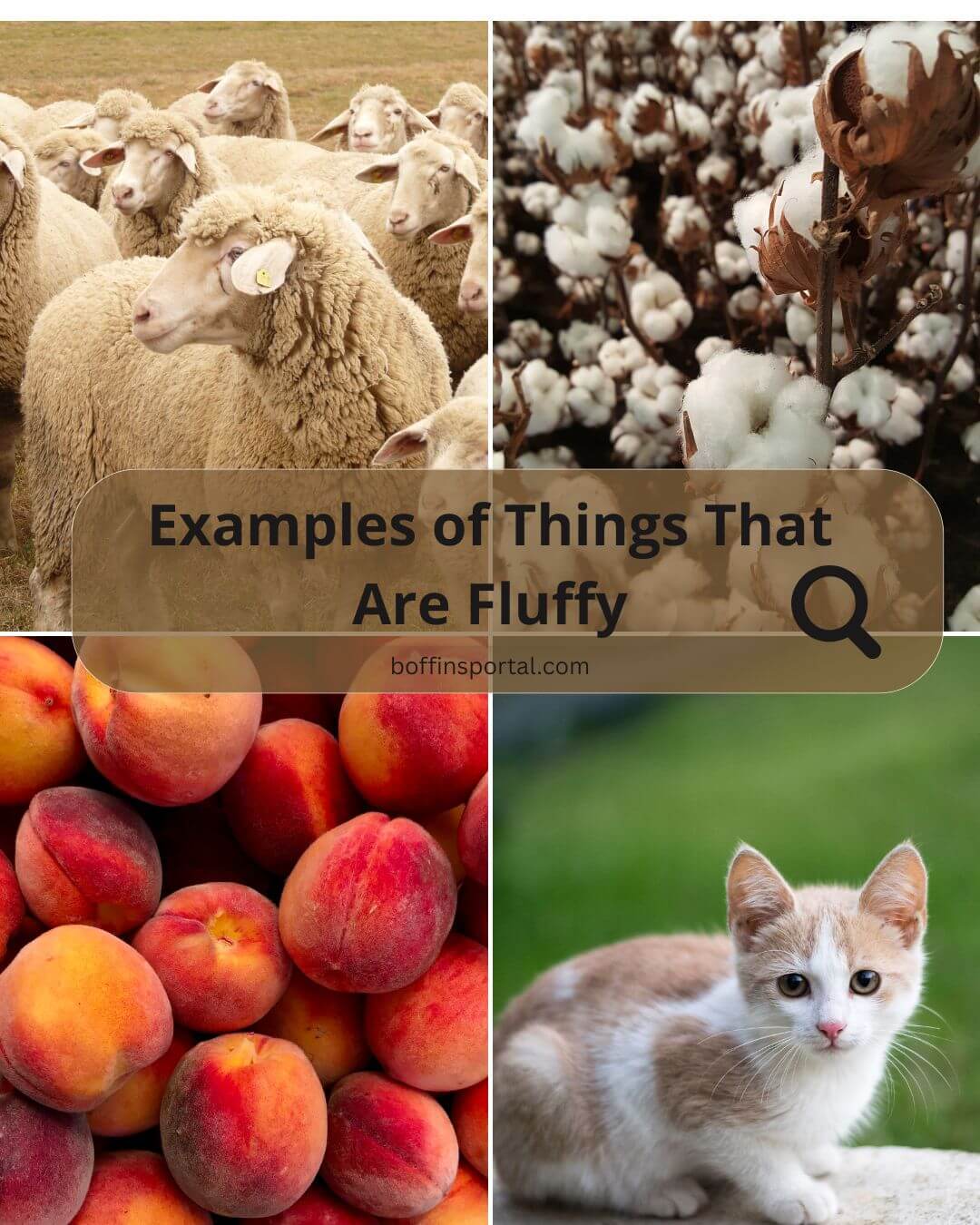We describe something as fluffy when it is soft, light, and airy in texture or appearance. Most things we consider fluffy are covered with fine hairs, fibers, feathers, or similar materials. To give you a clearer picture, here are some of the most common examples of naturally fluffy things.

1. Down feathers on birds
If you have ever touched a baby chick, you’ll notice how soft and light it feels. That’s because of the tiny feathers called down feathers. They are very fine and fluffy, almost like little pieces of cloud. Birds use them to stay warm, because fluffy feathers trap air and keep the bird cozy.
2. Sheep’s wool
A sheep’s coat is made of wool. Wool feels soft, springy, and fluffy or puffy when you touch it. People cut the wool off sheep, spin it into yarn, and use it to make warm sweaters and blankets. The reason it feels fluffy is that the wool fibers are curly and trap lots of little air spaces.
3. Kittens’ or puppies’ coats
Have you ever held a kitten or a puppy? Their fur feels super soft and fluffy. That’s because baby animals have very fine, light hair that makes them look puffy and extra cute. Their fluffy coats keep them warm and also make us want to cuddle them all the time.
4. Fur of rabbits, chinchillas, and alpacas
If you touch a rabbit or a chinchilla, you’ll notice their fur is unbelievably soft—so soft that it feels like touching a cloud. Alpacas also have fluffy coats that are light and warm. People often use their fur, called fiber, to make cozy clothes like scarves and sweaters.
5. Cotton bolls
On a cotton plant, the fruit bursts open and looks like little balls of snow stuck to a branch. These are called cotton bolls. They’re fluffy because the plant produces soft, white fibers to protect its seeds. We use those same fibers to make clothes, sheets, and many other everyday things.
6. Dandelion seed heads (“dandelion clocks”)
When a yellow dandelion flower gets old, it turns into a round ball of white fluff. Each tiny piece of fluff is attached to a seed, and when the wind blows—or when you puff on it—the seeds float away like little parachutes. That fluffy part helps the seed travel to a new place to grow.
7. Milkweed seeds
Milkweed plants also send their seeds flying. When the pods split open, you’ll see shiny brown seeds with silky white hairs attached. These silky hairs are soft and fluffy, and they help the seeds drift away on the breeze.
8. Peach or apricot skin
Have you ever touched a peach? Its skin feels a little furry. That’s because it’s covered with tiny, soft hairs. This fuzz helps protect the fruit from insects and too much sunlight, and it makes the fruit look fluffy on the outside.
9. Silkworm cocoons
A silkworm spins a soft cocoon made from a single long thread of silk. On the outside, the cocoon looks fluffy and puffy, almost like cotton. People collect these cocoons and carefully unwind the silk thread to make shiny fabric.
10. Moss growing on damp rocks or walls
If you look closely at moss on rocks or bricks, it looks like a little green carpet. Moss feels soft and cushiony to the touch, like nature’s version of a fluffy rug. It grows in damp, shady places and keeps the ground moist.
11. Puffball mushrooms
Puffball mushrooms look like little white balls sitting on the ground. When they are young, they feel soft and puffy, almost like tiny sponges. When they get older, they fill with powdery spores, and if you touch them, they release a fluffy cloud of dust into the air.
